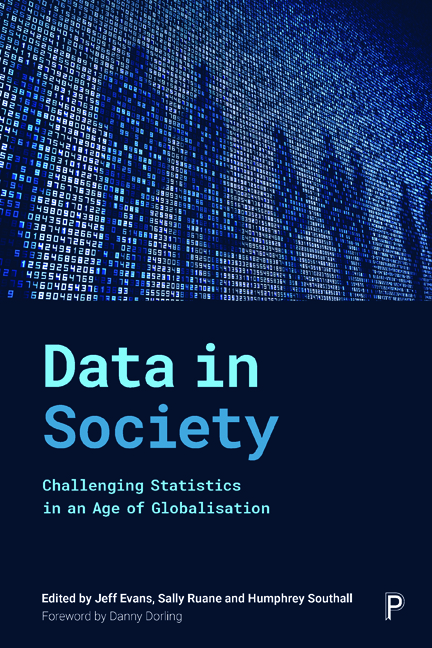Book contents
- Frontmatter
- Contents
- List of figures, tables and boxes
- Notes on contributors
- Foreword
- Preface
- General introduction
- Part I How data are changing
- Part II Counting in a globalised world
- Part III Statistics and the changing role of the state
- Part IV Economic life
- Part V Inequalities in health and wellbeing
- Part VI Advancing social progress through critical statistical literacy
- Epilogue: progressive ways ahead
- Index
19 - Health divides
Published online by Cambridge University Press: 30 April 2022
- Frontmatter
- Contents
- List of figures, tables and boxes
- Notes on contributors
- Foreword
- Preface
- General introduction
- Part I How data are changing
- Part II Counting in a globalised world
- Part III Statistics and the changing role of the state
- Part IV Economic life
- Part V Inequalities in health and wellbeing
- Part VI Advancing social progress through critical statistical literacy
- Epilogue: progressive ways ahead
- Index
Summary
Introduction
From the point of conception until their last breath, a person's health outcomes are more likely to be favourable as their social position rises (Marmot, 2015). For most outcomes measured, the evidence suggests a gradient effect with progressive improvements across the social spectrum still evident among relatively advantaged people, rather than a threshold effect with outcomes levelling once a certain level of advantage is reached (Wilkinson and Pickett, 2009). The association between social status and health is long observed. In the nineteenth century, Engels commented on the premature ageing of workingclass people in Manchester (Krieger, 2011), while the first official social class measure for England and Wales was developed, in part, to meet demands for statistics about class-based mortality differences (Macintyre, 1997).
There is much statistical evidence in the UK demonstrating the extent of health inequalities across the whole lifespan covering both health outcomes and risks to health. Wider determinants of health and inequalities, such as air pollution, precarious and unsafe work, poverty and poor housing, tend to feature less prominently in routine population health statistics.
This chapter begins with some important considerations regarding the measurement and framing of health inequalities. It then presents selected statistics illustrating inequalities in physical health outcomes and risks at three broad life stages: infancy and childhood, adolescence, and middle to later life. It mainly presents socioeconomic inequalities, largely due to data gaps for other important measures, such as ethnicity.
Measurement and framing
What do we mean by health divides?
Tomes have been written about measuring health inequality. There are many aspects to this, the most fundamental being which population groups should be compared? The health inequalities literature focuses predominantly on socioeconomic divides, but there is growing awareness that other social dimensions such as gender, ethnicity, disability, sexuality and migration experience are important determinants of health on their own, and in combination with socioeconomic position (Gkiouleka et al, 2018). The intersections between these dimensions create statistical challenges which necessitate new approaches (Bauer, 2014). However, at the time of writing, it is reasonable to say that the statistical world's response to intersectionality is still somewhat rudimentary. This chapter provides some examples of where intersectional approaches can or would add new insights, but the majority of its content focuses on the more abundant and accessible socioeconomic measures.
- Type
- Chapter
- Information
- Data in SocietyChallenging Statistics in an Age of Globalisation, pp. 251 - 264Publisher: Bristol University PressPrint publication year: 2019



